Top 12 most famous traditional artforms of Kerala
1.Kathakali
‘Kathakali’, an important genre in the Indian classical dance form, is associated with storytelling form of this art. It is the dance drama from the south Indian state of Kerala. Similar to other Indian classical dance arts, the story in ‘Kathakali’ is also communicated to audience through excellent footwork and impressive gestures of face and hands complimented with music and vocal performance. However it can be distinguished from the others through the intricate and vivid make-up, unique face masks and costumes worn by dancers as also from their style and movements that reflect the age-old martial arts and athletic conventions prevalent in Kerala and surrounding regions. Traditionally performed by male dancers, it developed in courts and theatres of Hindu regions contrary to other Indian classical dances which predominantly developed in Hindu temples and monastic schools.
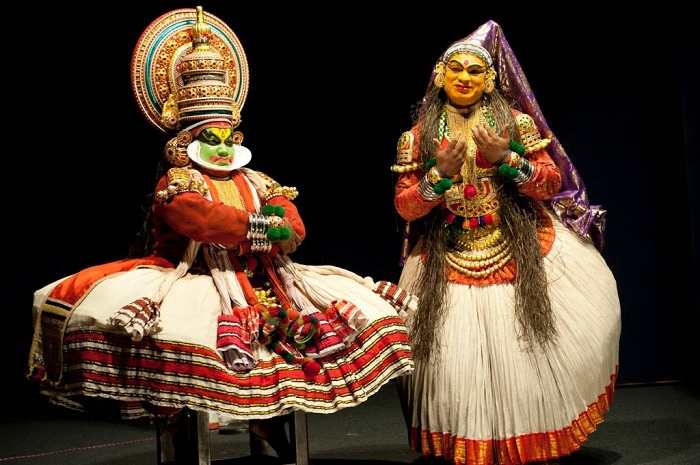
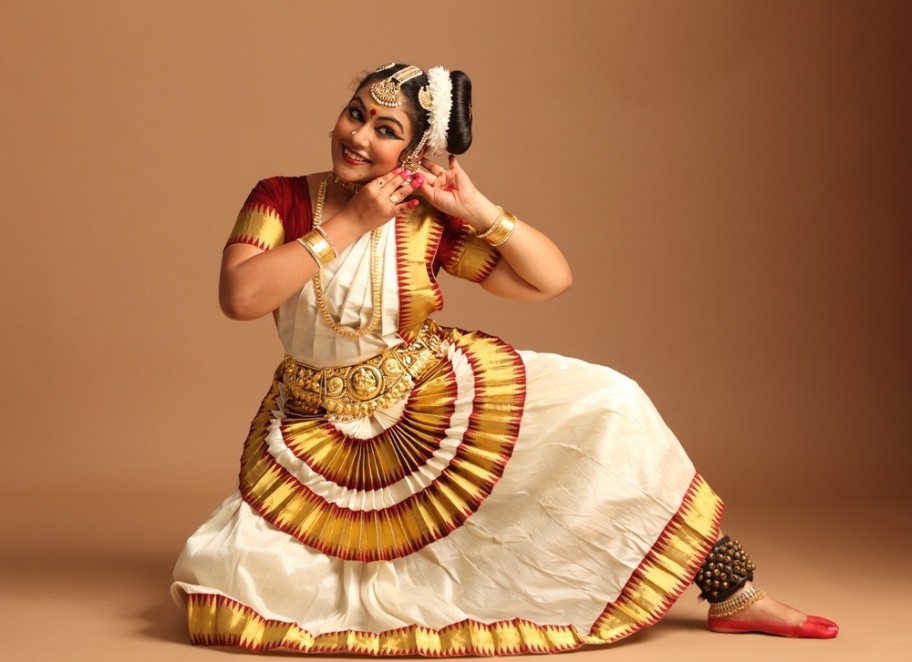
2.Mohiniyattam
Mohiniyattam is a semi-classical dance form of Kerala. It is perfomed by women. The word Mohini means a maiden who steals the heart of the onlooker. It is thought that Vaishnava devotees gave the name of Mohiniattam to this dance form. Legend says that Lord Vishnu took on the guise of a Mohini, the arch enchantress, to enthrall people. The movements are graceful and the costumes are sober and attractive.Mohiniyattam involves delicate footsteps and subtle expressions.The vocal music for Mohiniattam is classical Carnatic.
3.Theyyam
Theyyam is a popular ritual form of worship of North Malabar in Kerala, India, predominant in the Kolathunadu area (consisting of present-day Kasargod, Kannur Districts, Mananthavady Taluk of Wayanad and Vatakara and Koyilandy Taluks of Kozhikode of Kerala) and also in South Canara and Kodagu of Karnataka as a living cult with several thousand-year-old traditions, rituals and customs. The performers of Theyyam belong to the lower caste community, and have an important position in Theyyam. People of these districts consider Theyyam itself as a God and they seek blessings from this Theyyam.
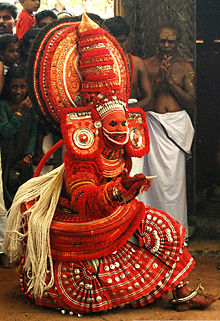
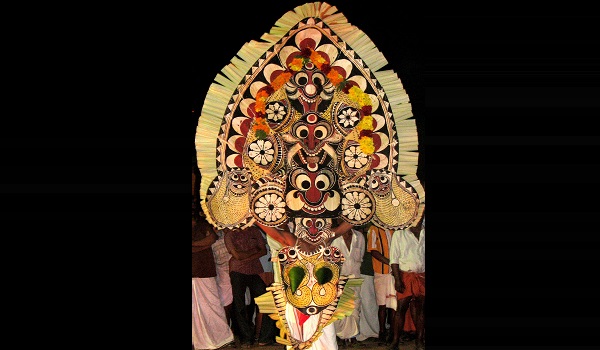
4.Padayani
Padayani, also called Padeni, (from the Malayalam word for military formations) is a traditional folk dance and a ritual art from the central portion of the Indian state of Kerala. A ceremonial dance involving masks, it is an ancient ritual performed in Bhagavati temples.The dance is performed in honor of Bhadrakaali.Meaning, a 'row of warriors', Padayani is an art form that blends music, dance, theatre, satire, facial masks, and paintings.
5.Thullal
Ottan Thullal (or Ottamthullal) is a dance and poetic performance form of Kerala, India. It was introduced in the 18th century by Kunchan Nambiar, one of the Prachina Kavithrayam (three famous Malayalam language poets). It is accompanied by a mridangam (a barrel shaped double headed drum) or an idakka (drum and cymbal).
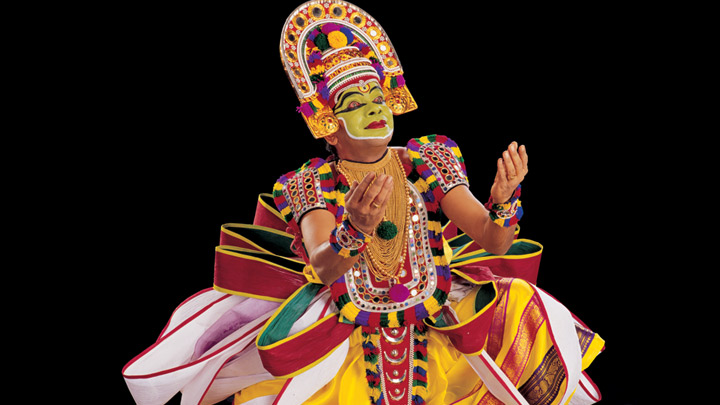
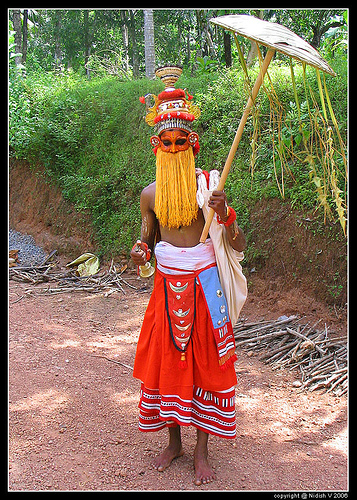
6.Onapottan
Onapottan - a folk character seen during Onam season specially in North Malabar Region. With the face painted and crown ( Kireedam ) he has a bell in his hand and an umbrella made of Palm Leaves on the other.
7.Pulikali
Pulikali ("Puli" = Leopard/Tiger & "Kali" = Play in Malayalam language) is a recreational folk art from the state of Kerala.It is performed by trained artists to entertain people on the occasion of Onam, an annual harvest festival, celebrated mainly in the Indian state of Kerala.
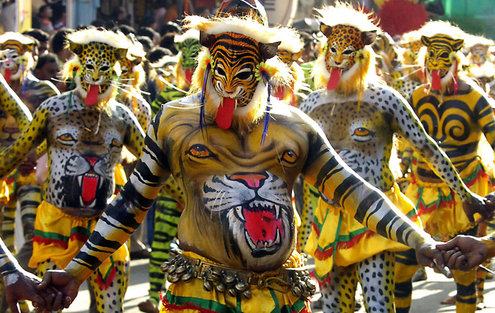
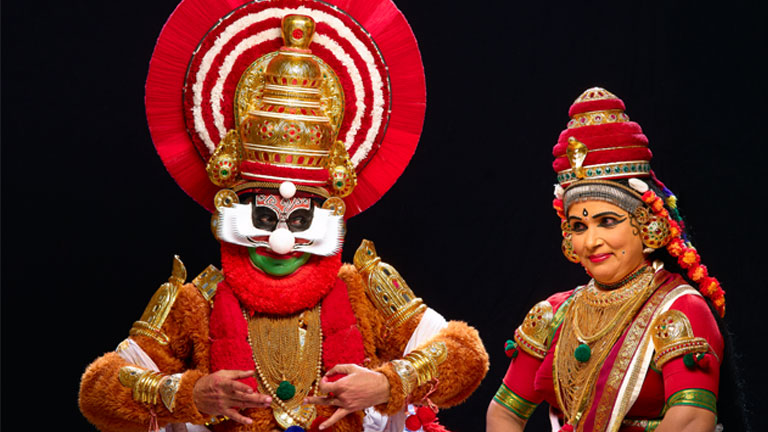
8.Koodiyattam
Koodiyattam, also transliterated as Kutiyattam, is a form of Sanskrit theatre traditionally performed in the state of Kerala, India. Performed in the Sanskrit language in Hindu temples, it is believed to be 2,000 years old. It is officially recognised by UNESCO as a Masterpiece of the Oral and Intangible Heritage of Humanity. It is called 'Kudiyattam' meaning:“performing or playing together”. It reflects the presence on stage of one or more actors synchronized to drummers playing the ancient, free-standing mizhavu drums.
9.Thirayattam
Thirayattam is a ritual performing Ethnic art form of South Malabar region in Kerala state, India. It blend of dance, theatre, music, satire, facial and body painting, masking, martial art and ritualistic function.
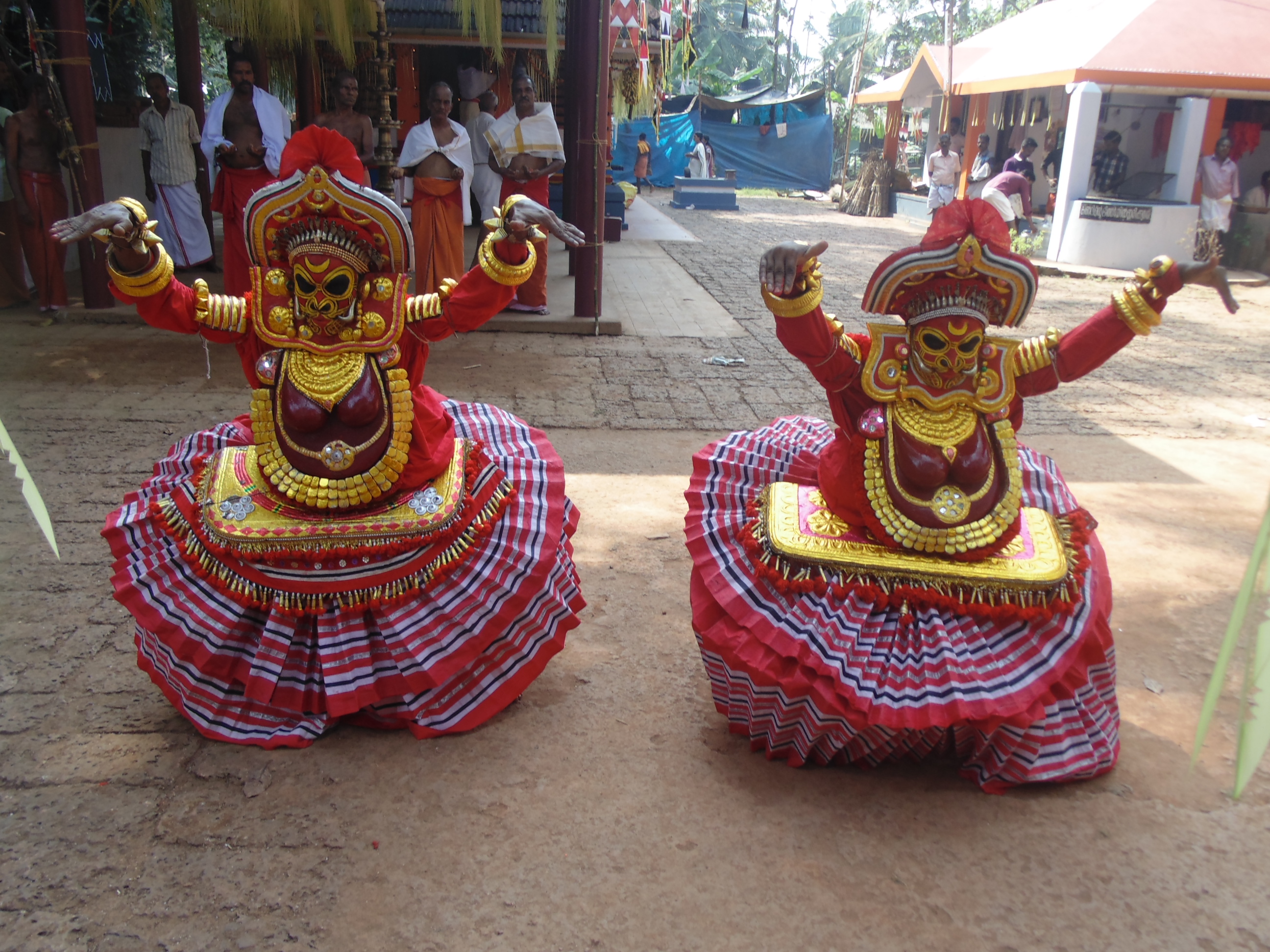
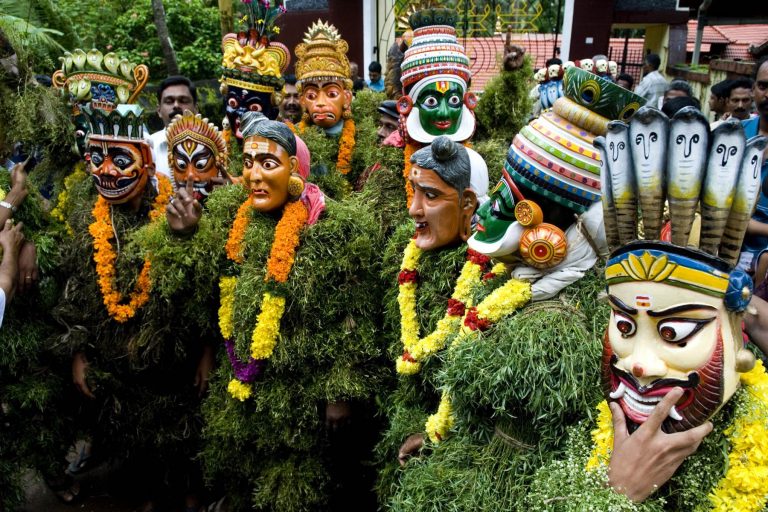
10.Kummattikali
Kummattikali or Kummatti Kali is the famous colorful mask-dance of Kerala, prevalent in Thrissur District, Palakkad District and parts of South Malabar. During the festival of Onam, Kummattikali performers move from house to house collecting small gifts and entertaining people.
11.Chakyar koothu
Chakyar Koothu is a performance art from Kerala, South India. It is primarily a type of highly refined monologue where the performer narrates episodes from Hindu epics (such as the Ramayana and the Mahabharata) and stories from the Puranas.
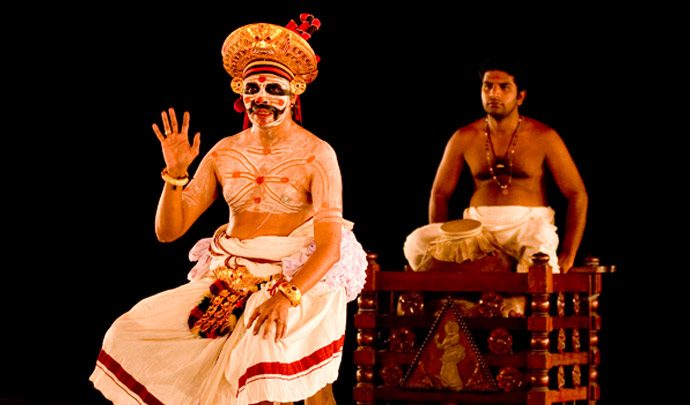
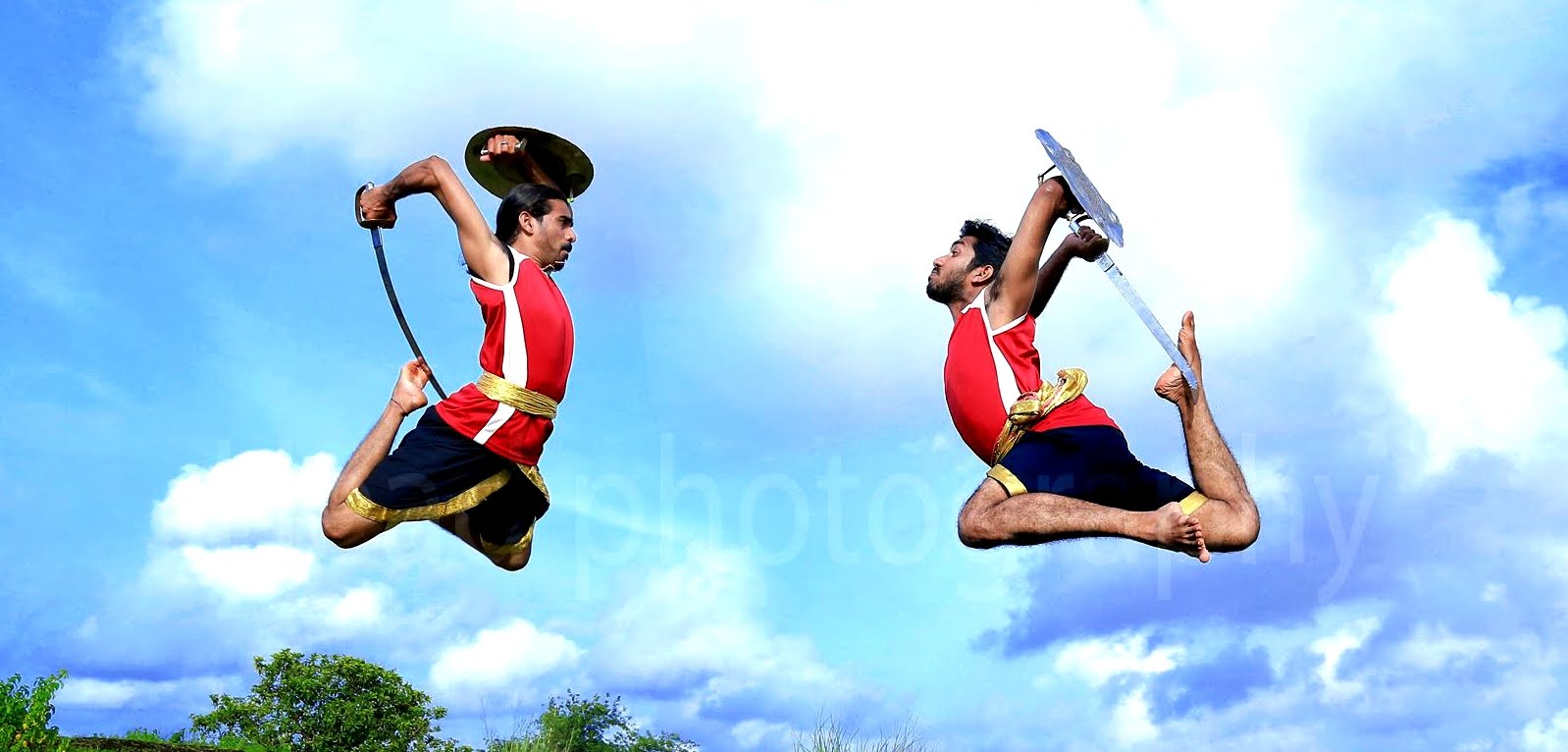
12.Kalaripayattu
Kalaripayattu is a martial art, which originated as a style in Kerala, southern India. The word kalari first appears in the Tamil Sangam literature to describe both a battlefield and combat arena.